.NET 7
.NET 7 is the latest version of the .NET platform and its release has resulted in significant enhancements across the entire API surface of the .NET stack, which follows .NET 6, and aims to bring unification, modernization, simplicity, and speed to the development process.
KEY TAKEAWAYS:
- .NET 7 brings significant performance improvements with features like On-stack Replacement (OSR), Profile-guided Optimization (PGO), improved code generation, and Native AOT compilation, resulting in faster execution of .NET apps.
- .NET 7 introduces a new non-backtracking engine for regular expressions.
- .NET 7 enhances HTTP, WebSockets, and introduces QUIC protocol, improving capabilities, performance, and security in networking operations.
- With Blazor Hybrid Support, developers can leverage existing Blazor components to create desktop applications that utilize web technologies, enabling access to system resources and hardware APIs.
- Azure Functions v4 now supports .NET 7 as a runtime, allowing developers to utilize the latest features with scalability of serverless functions in Azure.
As an STS (Standard-Term Support) release, .NET 7 will receive maintenance and support for 18 months, replacing the previous terminology of "current release". According to Microsoft .NET 7 release date was November 2022. The upcoming latest version of .NET will be .NET 8 on November 10 2023.
The objective of this article is to give a overview of the some main features and improvements that come with .NET 7, such as enhanced performance and scalability, Regex, Networking, better integration with Azure, better interoperability, new features and .NET 7 vs .NET 6.
.NET 6.0 is still the LTS version (Long Term Support) and supported for a total of 3 years. Next LTS is .NET 8 in November 2023. Both LTS and STS are fully supported versions.
.NET 7
.NET 7 is designed with a strong focus on performance, and several enhancements have been made to optimize it further. These include On-stack replacement (OSR), Profile-guided optimization (PGO), improved code generation for Arm64, and Native AOT. The Mono runtime has also received performance improvements.
The regular expression library in .NET 7 has been significantly improved for both functionality and performance. A new non-backtracking engine has been introduced which guarantees linear-time processing and is optimized for all regular expressions and inputs. Regular expression source generators provide throughput performance benefits by building an engine optimized for your pattern at compile time. Performance gains have also been made for case-insensitive searches, and Regex now supports spans for some APIs.
.NET 7 New Features
- Regex Enhancement:
First, .NET 7 received regular expression improvements. These enhancements make working with regular expressions even more powerful and efficient. It's worth noting that these improvements are in addition to the general speed enhancements present in .NET 7. In fact, .NET 7 is faster than its predecessors, including .NET 6, .NET 5, and .NET Core 3.1.
- Performance Improvement:
Further performance enhancements with .NET 7 make the program more efficient. .Net 6 was already having a huge impact on performance, and .NET 7 will go more. Even if you do not have any issues with the performance today it will help you save cost without changing the source code that you use when running in the cloud.
-
.NET 7 Brings Networking Improvements:
In regards to networking operations, the existing HTTP and WebSockets protocols have been enhanced for better capabilities and performance in .NET 7. Additionally, a new protocol called QUIC has been introduced and has a significantly better performance compared to its predecessor in .NET 6.
To achieve these performance improvements in networking capabilities, unnecessary memory allocations were eliminated in the SslStream class, and old implementations were replaced with new ones. The opening of connections is now faster on sockets for all platforms, and certain operations such as the IndexOf method collection on the response body and the HtmlDecode utility method are now quicker. Furthermore, for secure connections, optional performance-enhancing actions such as TLS resume support or OSCP stapling of certificate non-revocation proof are now allowed in the security protocols, and these optimizations have been implemented in DotNet 7.
-
Faster, Lighter Apps (Native AOT):
For certain applications, Native AOT is a game-changing addition to .NET 7. Native AOT Native AOT( Ahead-of-time) is yet another one of the many enhancements and innovations that Microsoft has introduced with Dot Net 7. After a time it was decided that the experimental Native AOT project has now become the primary area for Microsoft's work. As many people have been asking for quite a while, Microsoft has decided to provide us with a couple of enhancements for Native AOT.
For those who aren't sure what the meaning of Native AOT actually is. the term "ahead of time" (simply AOT) generates code at the time of compilation instead of at run-time. As of now, Microsoft already offers ReadyToRun, which is also known as RTR (client/server applications) and Mono AOT (mobile and WASM applications) to fulfill this need. Additionally, Microsoft adds that Native AOT is not a replacement for Mono AOT or WASM.
- Blazor .NET 7 Hybrid Support :
Blazor Hybrid Support will allow us to use existing components from Blazor and combine them together to create desktop applications that use a web view control and access to the entire hardware APIs. Developers will be able to utilize web technologies to develop desktop applications that can access systems resources, such as files on the local system, or a webcam.
-
ASP.NET Core improvements in .NET 7:
The ASP.NET Core 7.0 version comprises enhancements to minimal APIs, gRPC JSON transcoding, and middleware for rate-limiting purposes. The rate-limiting middleware, is provided by Microsoft.AspNetCore.RateLimiting, allows applications to define and link rate-limiting policies with specific endpoints.
The minimal APIs in ASP.NET Core 7 were improved to provide more features, such as support for OpenAPI, application configuration, and endpoint routing. The gRPC JSON transcoding feature enables interoperability between gRPC services and clients that support JSON formats.
- Upgrade Tools in .NET 7:
The team behind .NET has released the .NET Upgrade Assistant tool to help in the migration process from .NET Framework to modern .NET targets. They have since been working to improve the tool's functionality and bridge any gaps. The release of .NET 7 offers additional tooling options that aim to ease the transition, including upgraded features in the Upgrade Assistant and new tools designed for web scenarios such as the ASP.NET Incremental Migration Tooling and System.Web Adapters.
-
Azure Functions get support from .NET 7:
Azure Functions v4 now supports .NET 7 as a runtime, which is exciting news for developers looking to build serverless functions in Azure using the latest features of the .NET runtime. This upgrade also brings Azure Functions in line with Azure Web Apps, which also recently announced .NET 7 support.
This development means that developers can now focus on coding with .NET 7's new features without worrying about the underlying infrastructure. This is great news for developers all around the world who want to scale their applications without worrying about managing dependencies.
With .NET 7, Azure Functions now offers the .NET Isolated Worker model, which allows developers to build serverless applications in Azure with greater flexibility. This model decouples the function process from the Azure Functions runtime, which allows for more efficient management of dependencies and service registration and enables targeting different versions of .NET.
-
.NET 7 Docker:
The new .NET 7 SDK allows you to quickly build Docker Images and run containers for your application without the need for an extra Dockerfile, which means one less file to manage. Containers have become a popular way to distribute and run a variety of applications and services in the cloud, and the .NET Runtime has supported containers for years. With the .NET SDK, container images are now a supported output type, and you can create containerized versions of applications with just "dotnet publish". Microsoft has announced that the .NET 7 SDK will support building containerized applications within the publish tooling, making the workflow simpler and reducing the amount of Docker code that developers need to maintain.
These are a few of the .NET 7 changes, features, and improvements we have listed here.
.NET 6 vs .NET 7
The introduction of Minimal APIs is a significant development in web development using .NET 6. With .NET 7, Minimal APIs have been further improved by adding new features and enhancements like endpoint filters, route groups, and typed results. Blazor has also been enhanced in .NET 7 to make it more user-friendly and powerful. Additionally, gRPC support has been improved in .NET 7 with new features like performance improvements, creating RESTful services with gRPC JSON transcoding, and gRPC apps on Azure App Services.
In deciding whether to use a non-LTS release like .NET 7, a company should carefully consider the consequences. If their application requires extended support, they might want to delay until the next LTS release or consider a different framework that provides more extended support. However, if they value the newest features and enhancements, then .NET 7 might be an appropriate option for their project. You can read .NET 7 Release Notes from its official documentation and we will make an effort to keep you informed about .NET Latest Version. As per official announcement, .NET 7 support end date is May 14, 2024.
.NET 7 - Getting Started
Download and install .NET 7
To start the development of .NET applications, it is necessary to download and install .NET 7 SDK (Software Development Kit).
You can use the following official links to download .NET 7 SDK.
64-bit download | 32-bit download | Arm64 download
You also have to install Visual Studio 2022, you can use the community free edition which is available to download from the following official link.
In this article, we delve further into how to create an ASP.NET Core application based on .NET 7 using Visual Studio 2022 and how to upload and host for free on FreeASPHosting.net.
After installation, verify if everything is correctly installed by launching a new command prompt and executing the following command:
> dotnet
To aid in a swift start, now we will illustrate the process of creating and publishing a basic web application that utilizes .NET 7 on FreeASPHosting.net.
Let’s get started developing and publishing with .NET 7
We provide Web hosting solutions which include .NET 7.0 that provide businesses and individuals with a hosting platform to host web-based applications or websites. Our Web hosting services of .NET 7.0 provide many benefits including improved performance, Improved security, and better development experience. We offer assistance for .NET 7 within our hosting plans which makes it simple to find a hosting service that is suitable for your requirements and budget. If your company looking to host a business site or as an individual who wants to host their own personal blog or application, .NET 7.0 hosting is the best option.
First, open Visual Studio and select ‘Create a New Project’. Search for ‘ASP.NET Core Web App’, select the first option, and click Next.
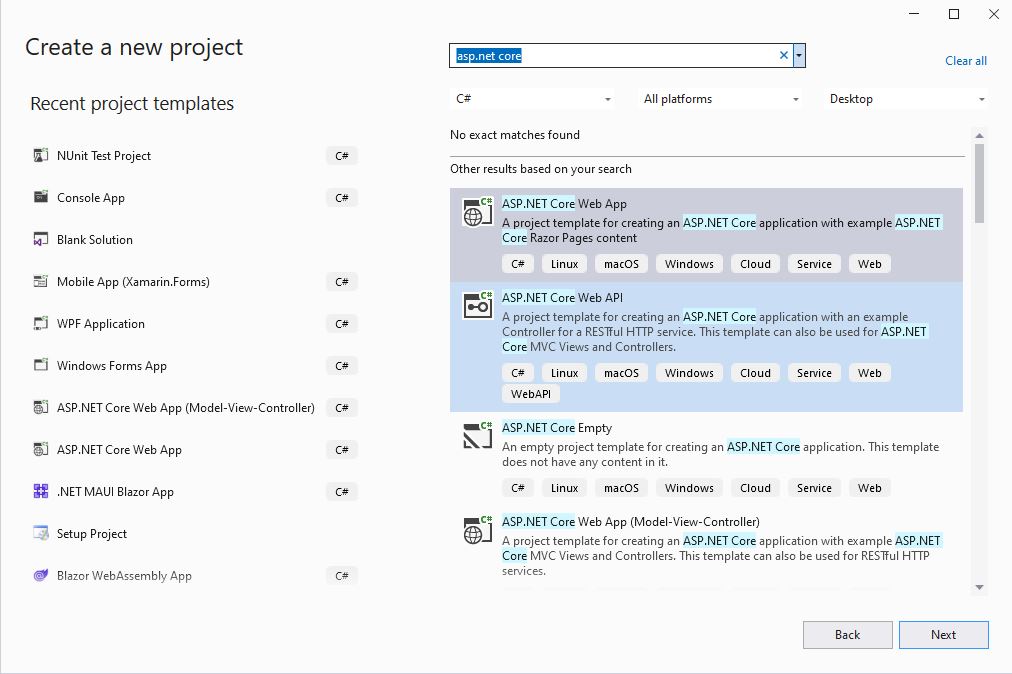
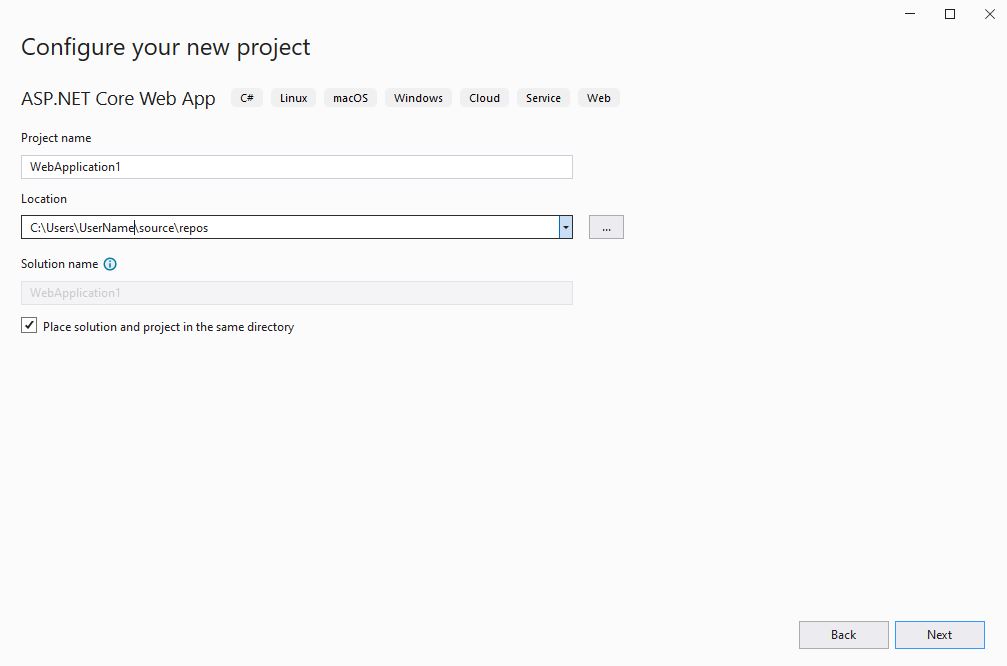


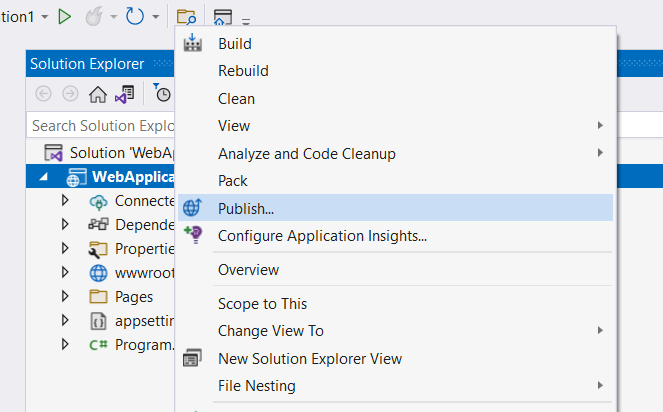
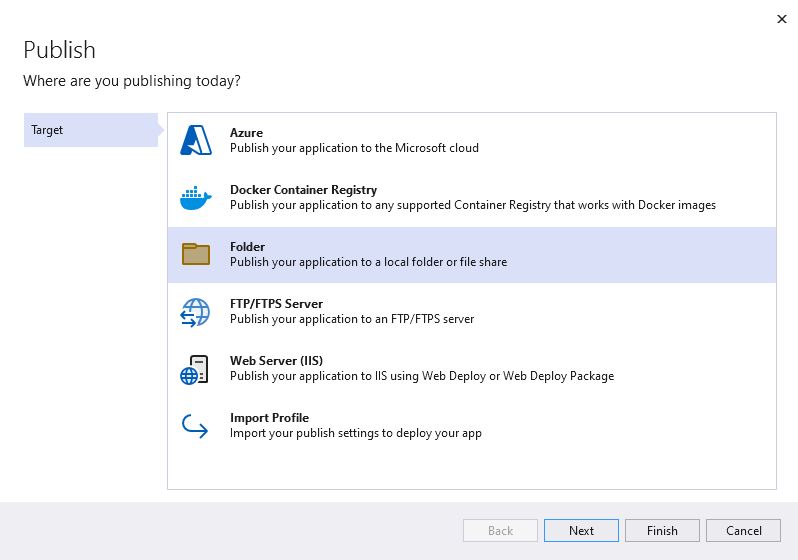
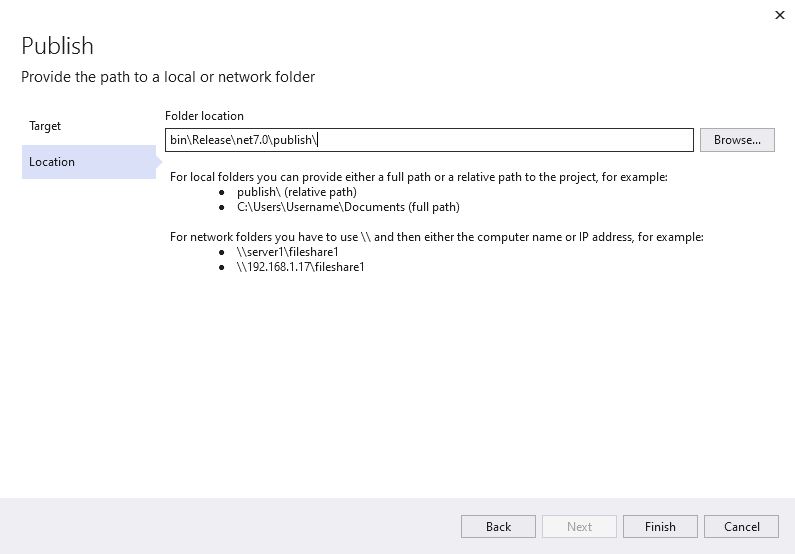

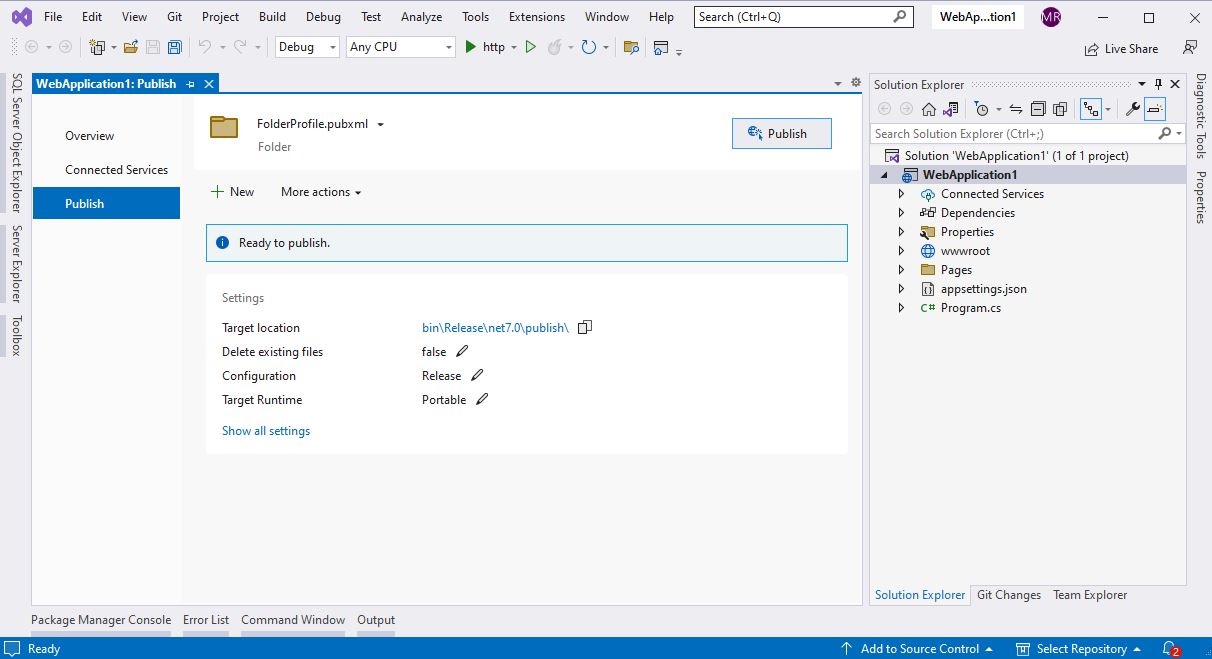

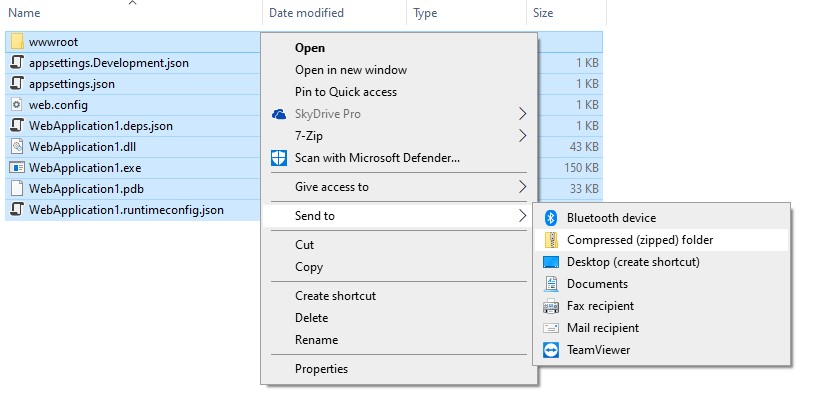
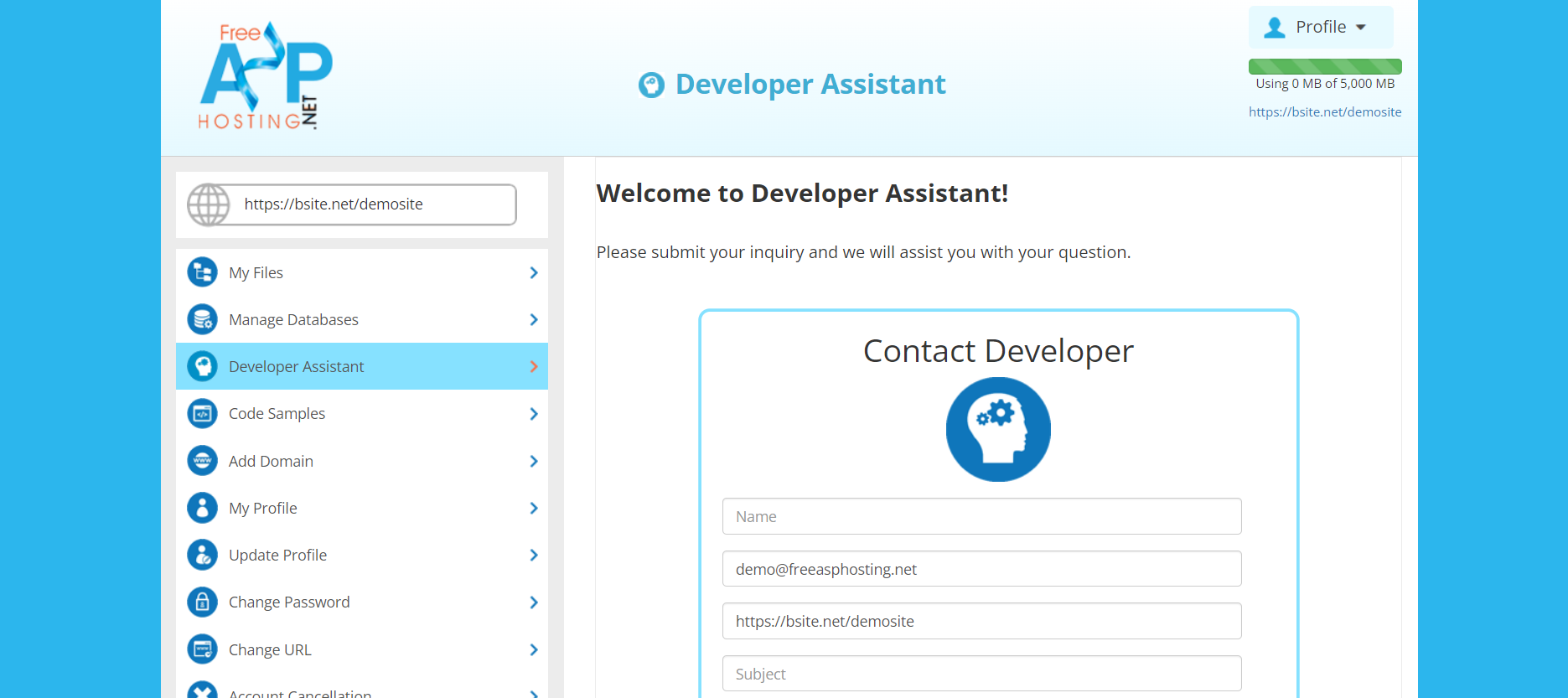
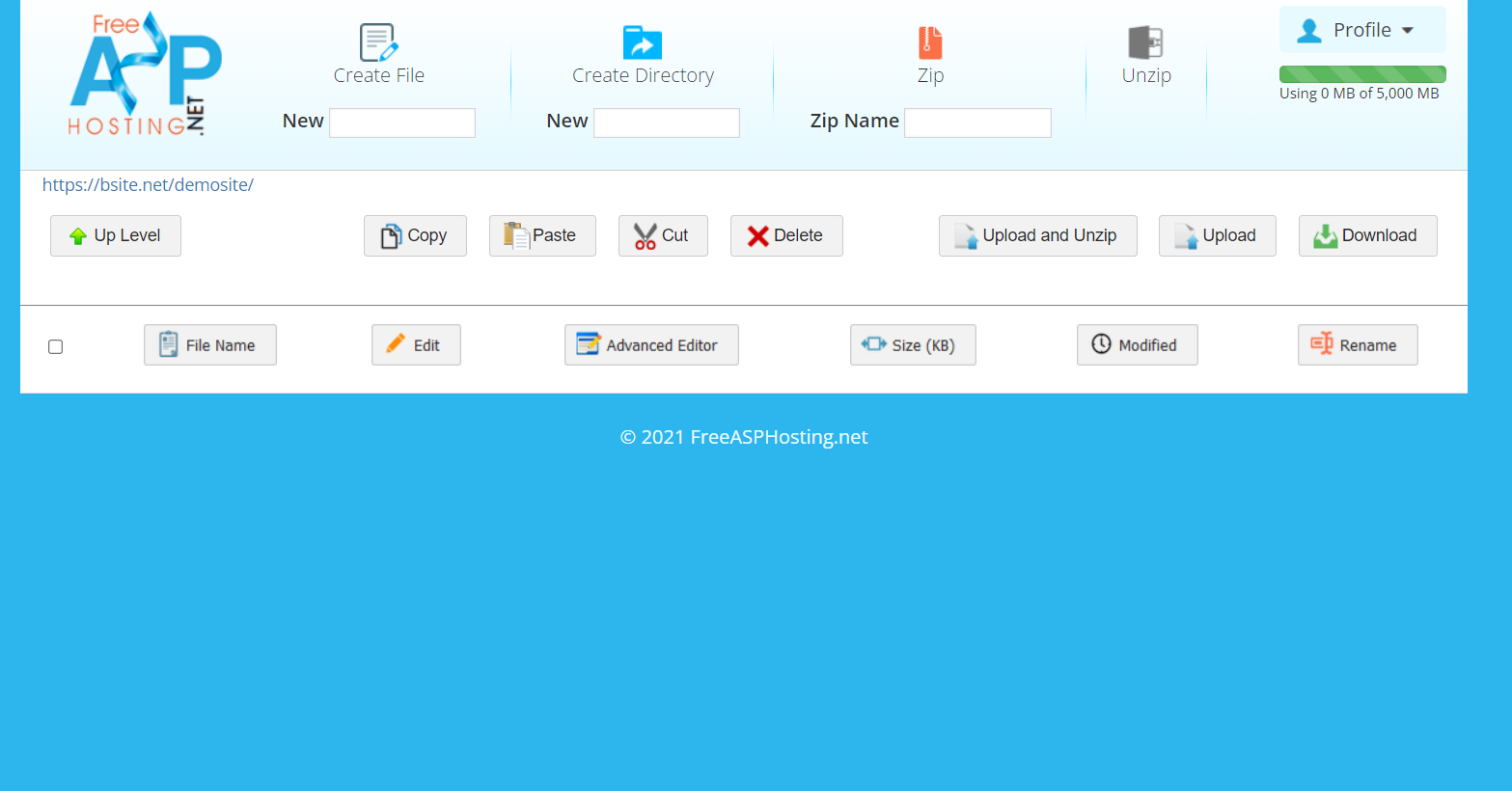
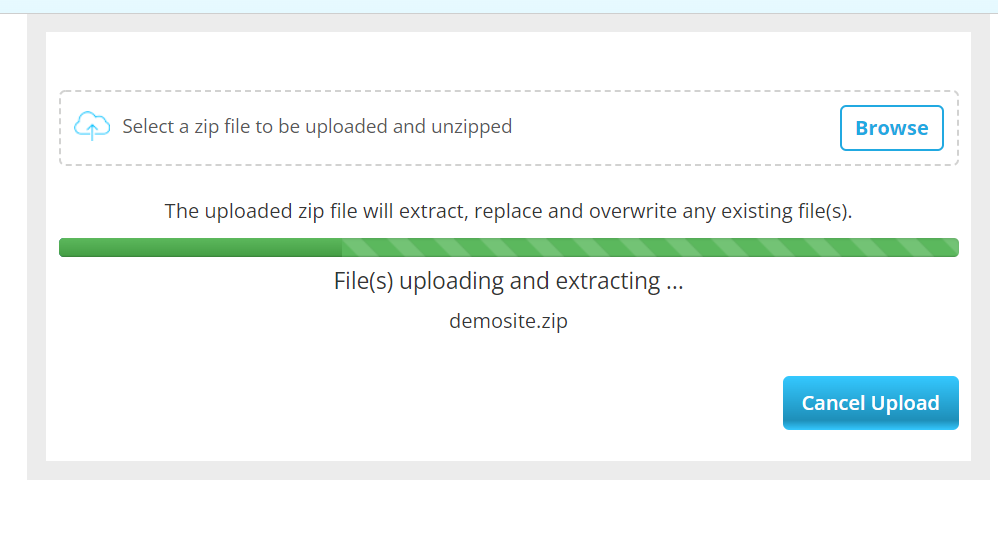

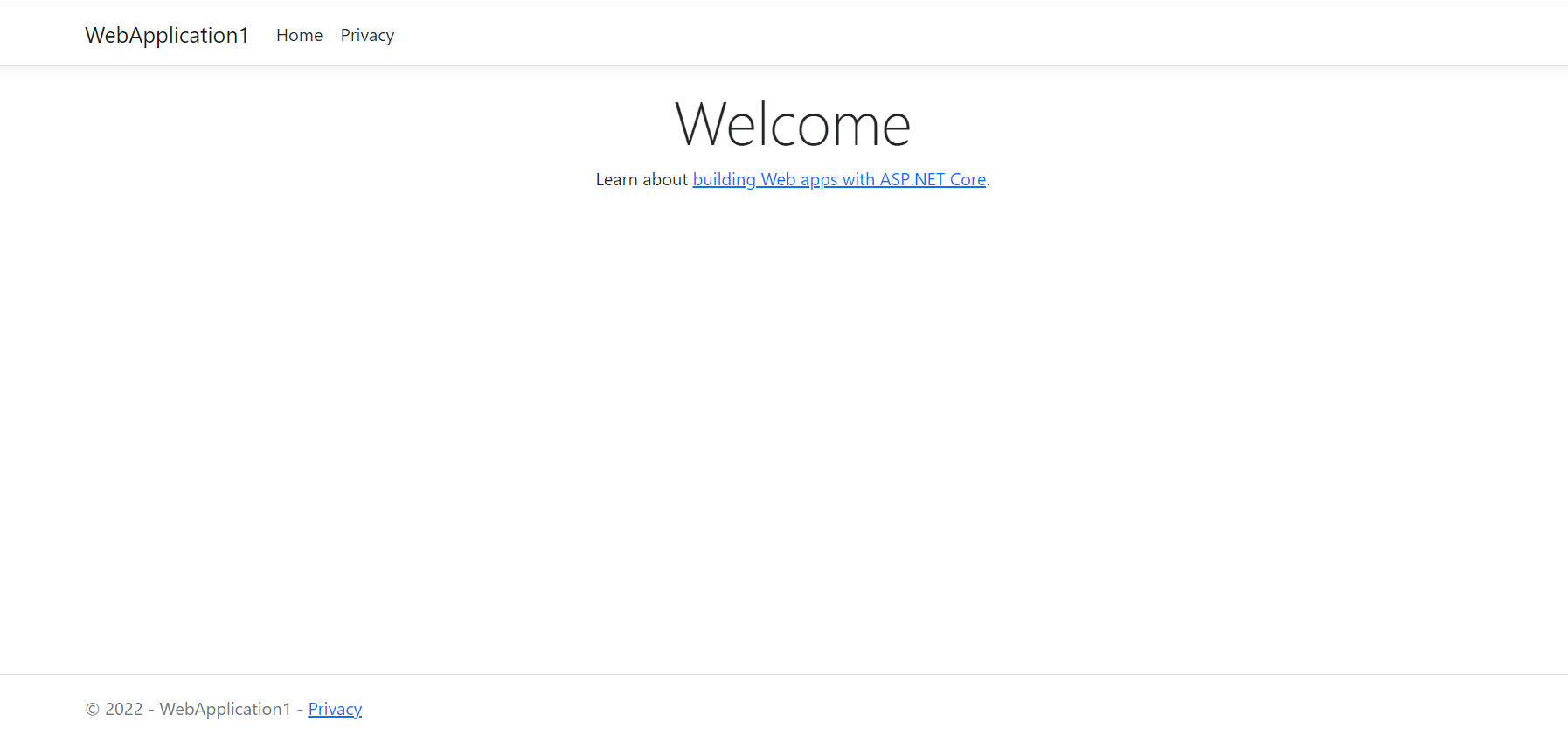
Congratulations, you’ve just created your .NET 7 web application and successfully published it online!
At the end of this tutorial, we want to give another valuable information, if you have a compiled form of the .NET 7 application and just want to run that, whether it's web or desktop, you can download .NET 7 Runtime for ASP.NET Core or for Desktop from this official link.
.NET 7 - Final Thoughts and Recommendations
We will recommend you follow the .NET 7 Roadmap for ASP.NET Core, Mobile, Desktop, and other related stack before starting learning or migrating. If you're thinking about upgrading to .NET 7.0, you should know that there could be some breaking changes that may impact your application’s functionality or cause some unexpected errors. So, it's important to do your homework and test your code thoroughly before making the switch. You definitely don't want any surprises or headaches during the transition, so be careful and pay close attention.